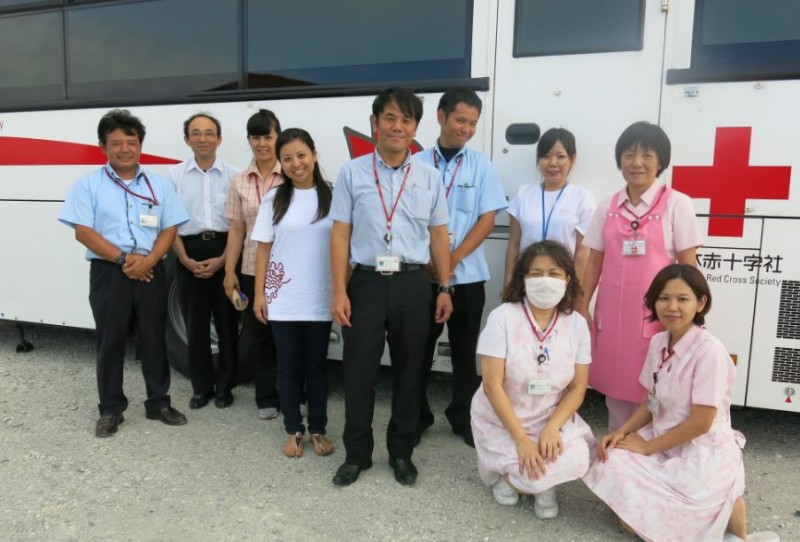
The International Red Cross and Red Crescent Movement (IRCR) stands tall as one of the most remarkable and impactful humanitarian organizations in the world. From war-torn regions to areas devastated by natural disasters, the IRCR has been at the forefront of providing aid and relief to those in need for over a century. In this article, we delve into the history, principles, and organizational structure of the IRCR, as well as its humanitarian aid and disaster relief efforts that have saved countless lives worldwide.
History of the IRCR
The roots of the IRCR trace back to the efforts of Henry Dunant, a Swiss businessman, who was deeply moved by the horrors of the Battle of Solferino in 1859. His vision of establishing an independent organization that would provide care and assistance to wounded soldiers, regardless of their nationality, laid the foundation for the IRCR's establishment in 1863. The organization's commitment to neutrality and impartiality soon garnered widespread recognition and support.
Over the years, the IRCR expanded its activities and played a significant role in numerous historical events, including World War I and II. Its efforts to protect prisoners of war and civilians during conflicts earned the IRCR international acclaim. Additionally, the movement's continuous growth led to the adoption of the Red Crescent symbol in Muslim-majority countries to ensure acceptance and respect for cultural differences.
Principles and Values
Central to the IRCR's identity are its seven fundamental principles: Humanity, Impartiality, Neutrality, Independence, Voluntary Service, Unity, and Universality. These principles guide every aspect of the IRCR's operations and reaffirm its commitment to alleviating human suffering and promoting dignity for all. The organization's humanitarian values form the cornerstone of their approach, shaping their responses to crises with empathy and compassion.
Organizational Structure
The IRCR operates as a decentralized movement, consisting of the International Committee of the Red Cross (ICRC), the International Federation of Red Cross and Red Crescent Societies (IFRC), and numerous National Red Cross and Red Crescent Societies worldwide. Each component has distinct responsibilities within the movement while collaborating closely to maximize their impact.
The ICRC focuses on providing humanitarian aid during armed conflicts and other emergencies, working tirelessly to ensure the protection and well-being of affected communities. On the other hand, the IFRC concentrates on disaster response and recovery efforts, supporting National Societies in their respective regions.
Humanitarian Aid Efforts
One of the core aspects of the IRCR's work is its immediate response to emergencies and crises. When disaster strikes, whether it be a natural calamity or a conflict-induced humanitarian crisis, the IRCR swiftly deploys its teams to provide critical medical assistance, food, clean water, and shelter to those affected. Their teams are trained to work efficiently in high-pressure environments, prioritizing saving lives and alleviating suffering.
In regions marred by conflict, the IRCR plays a vital role in facilitating medical evacuations and ensuring access to healthcare for civilians and combatants alike. The organization's efforts often involve negotiating safe corridors for aid delivery and access to medical facilities, a testament to their commitment to impartiality and neutrality.
Disaster Relief Efforts
Disasters can have long-lasting effects on communities, leaving them vulnerable and displaced. The IRCR is quick to respond to such situations, providing immediate relief in the form of temporary shelter, hygiene kits, and basic necessities to help people recover and rebuild their lives. Additionally, the IRCR's rehabilitation efforts aim to restore communities to a state of self-sufficiency, empowering them to overcome the challenges posed by calamities.
International Cooperation
The IRCR recognizes that effective humanitarian aid requires cooperation and collaboration with various stakeholders. They work closely with other humanitarian organizations, governments, and non-governmental entities to coordinate responses and optimize resource utilization. Such alliances strengthen the global humanitarian network and ensure a more comprehensive approach to alleviating suffering.
Challenges and Limitations
Operating in complex and sometimes hostile environments, the IRCR faces numerous challenges. From security risks to bureaucratic hurdles, these obstacles can hinder their operations and delay aid delivery. Nonetheless, the IRCR remains steadfast in its commitment to finding innovative solutions and adapting to ever-changing circumstances.
Impact and Success Stories
The IRCR's dedication to its principles has led to countless success stories. From reuniting families separated by conflict to providing life-saving medical treatments, the organization's work has left a profound impact on the lives of millions of individuals worldwide. Success stories serve as a source of inspiration and motivation, encouraging the IRCR to continue their crucial work.
Ongoing Projects and Future Goals
The IRCR's mission is far from complete. With ongoing projects across the globe, they remain focused on their commitment to humanitarian assistance and disaster relief. Their future goals include strengthening preparedness measures, expanding aid efforts in underserved regions, and empowering communities to build resilience against future disasters.
How to Get Involved
For those inspired to make a difference, there are several ways to get involved with the IRCR. Volunteering opportunities exist for individuals with various skills and backgrounds. Furthermore, donations and support are instrumental in enabling the IRCR to sustain and expand their efforts to reach those in need.
In conclusion, the International Red Cross and Red Crescent Movement epitomizes the power of compassion, solidarity, and humanity. Through its humanitarian aid and disaster relief efforts, the IRCR continues to be a beacon of hope for those facing unimaginable hardships. As we reflect on the organization's history, principles, and achievements, let us be reminded of the collective responsibility we share to support one another in times of crisis and uphold the dignity of every human life.
European Union (EU): Fostering Economic Integration and Cooperation among European Nations
World Intellectual Property Organization (WIPO): Protecting Intellectual Property Rights Globally
World Trade Organization (WTO): Facilitating International Trade and Resolving Trade Disputes